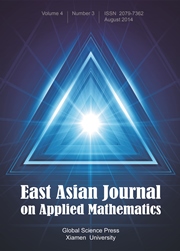Crossref Citations
This article has been cited by the following publications. This list is generated based on data provided by Crossref.
Qian, Zhi
and
Feng, Xiaoli
2017.
A fractional Tikhonov method for solving a Cauchy problem of Helmholtz equation.
Applicable Analysis,
Vol. 96,
Issue. 10,
p.
1656.
Zheng, Zhenming
Li, Zhenping
and
Xiong, Xiangtuan
2020.
An improved error bound on the boundary inversion for a sideways heat equation.
São Paulo Journal of Mathematical Sciences,
Vol. 14,
Issue. 1,
p.
287.
Li, Zhenping
Xiong, Xiangtuan
Li, Jun
and
Hou, Jiaqi
2022.
A quasi-boundary method for solving an inverse diffraction problem.
AIMS Mathematics,
Vol. 7,
Issue. 6,
p.
11070.


